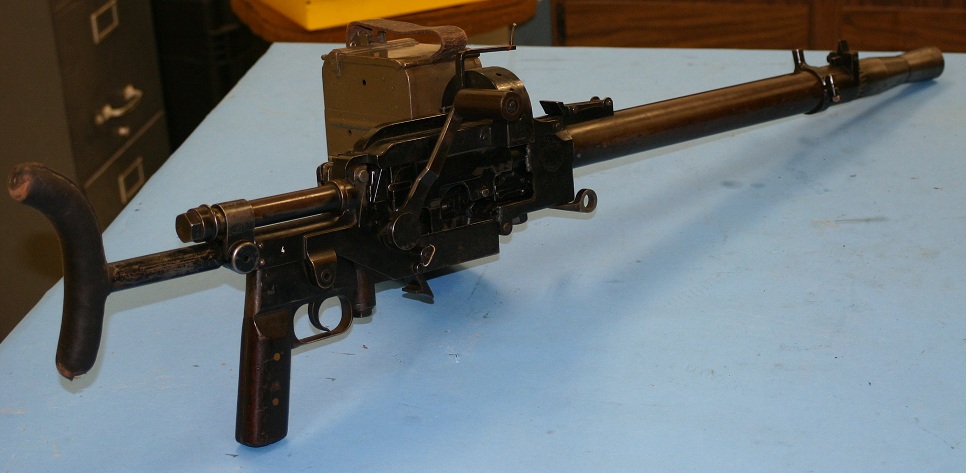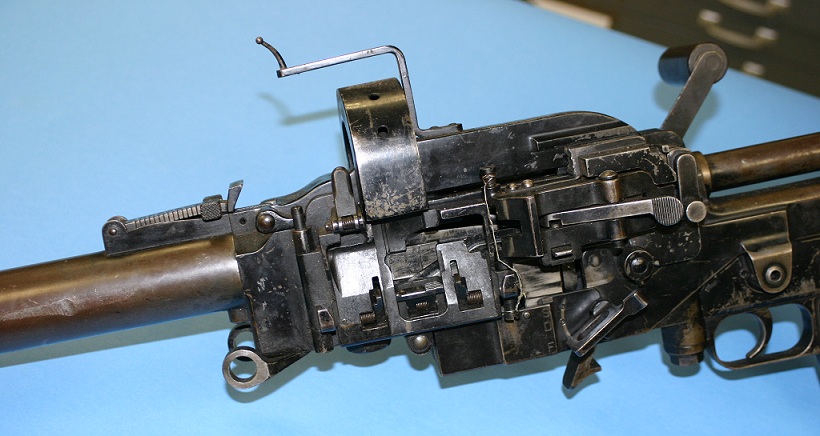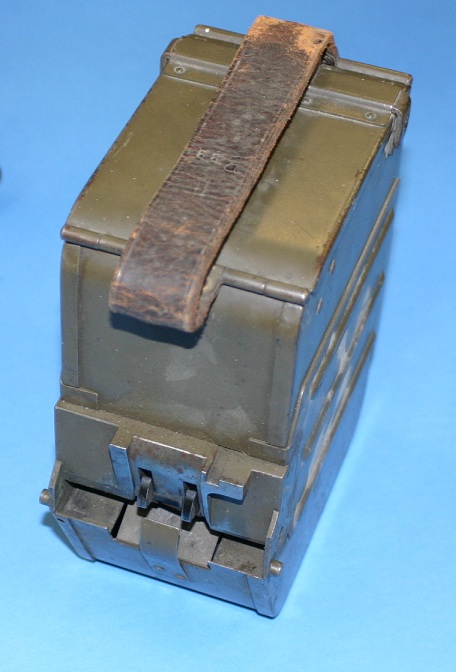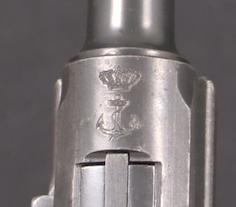We spotted this interesting gun at SAR West 2011. It’s actually a parts kit, as the sides of the receiver have been chopped up and discarded. But the remaining pieces make for a very interesting examination. It’s a belt-fed Madsen light machine gun intended for use in tanks and armored vehicles (it has a solid, armored barrel jacket – the similar aircraft version had a slotted jacket for better cooling).

On closer inspection, this thing makes steampunk props look bland:

The oddities begin with the link ejection chute, which wraps around the top of the gun like a horseshoe. On more beltfed guns there is a bolt mechanism that move backward and forward, and you can feed rounds in one side and eject them out the other. The Madsen, however, uses a falling block sort of action not too unlike a full-auto Martini-Henry (if you can picture that). The bolt only moves a little bit up and down, and there’s no space to push an empty link through. So instead, they are shoved up that square tube and when enough pile up, they start falling out the other side. I presume that when you empty the belt and pull off the empty box, 6 or 8 will fall down on the feed side of the gun.
Speaking of the belt box, the next oddity is that have the feed mechanism is built into the box instead of the gun.

See those two hooks on the face of the box? Those are half of the feeding system. There is a pawl on the gun that pulls a round upward into the gun, and those two bits on the box hold the belt in place. Without the box in place, the gun cannot function. I suppose that’s fine for the accountants at Madsen, but it kinda sucks for the soldier trying to use the gun in an emergency, or someone like the collector at the show who tried to buy the kit just to get the box because he had a parts kit for this very gun but no belt box to go along with it.
Want to see more? We have a huge gallery of photos on the Madsen LMG page in the Vault.
The biggest question this gun raises would be, why would any sane military buy it in the 1940s when they could get a Browning instead? This particular gun is serial number 4 – I think that’s a marketing ploy to convince Portugal (the buyer) that they already had three other happy customers.




Awesome post!!!
67 pics of such a nice gun ! Thanks a lot!
What countries would have used this variant?
It occurred to me that this may be a better (or at least more mature) design than the US M73 tank machine gun. 😉
The advantage of the Madsen design is that the receiver is comparatively short overall. Not a huge deal if you’re lugging it across an open field, but inside a tank every half inch matters.
In an alternate history, an improved version of this might have worked better than the M73. (An attempt to add a barrel change mechanism which could work from either side might have killed it anyway).
Your link to the “Madsen LMG page in the Vault” is dead BTW.
The Madsen was also proven to be highly scalable, even to cannon cartridges. If you rigged up a gas system to drive the cam surfaces mounted on the receiver instead of having the barrel reciprocate, the action would be even shorter.
Reading the wikipedia entry on the Curtis P36, there was mention of an Argentine variant.the Mohawk 750. The entrysays it was equipped with 1 .45cal Madsen machinegun, & 3 7.65mm Madsen machineguns. .45 cal Madsen mg. South America is a different universe!
Nice article and photos of the Madison belt feed that I loan to you at SAR 2011